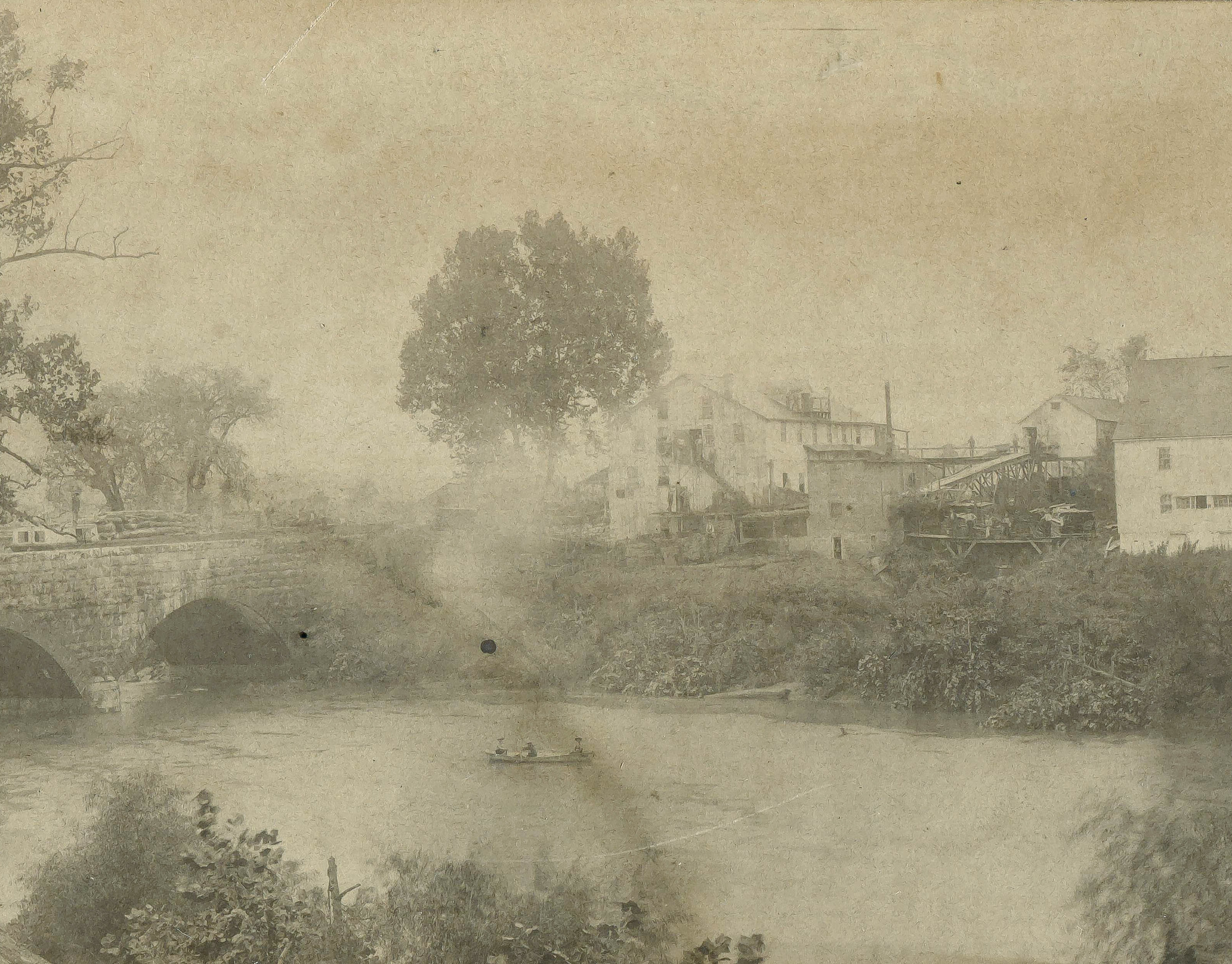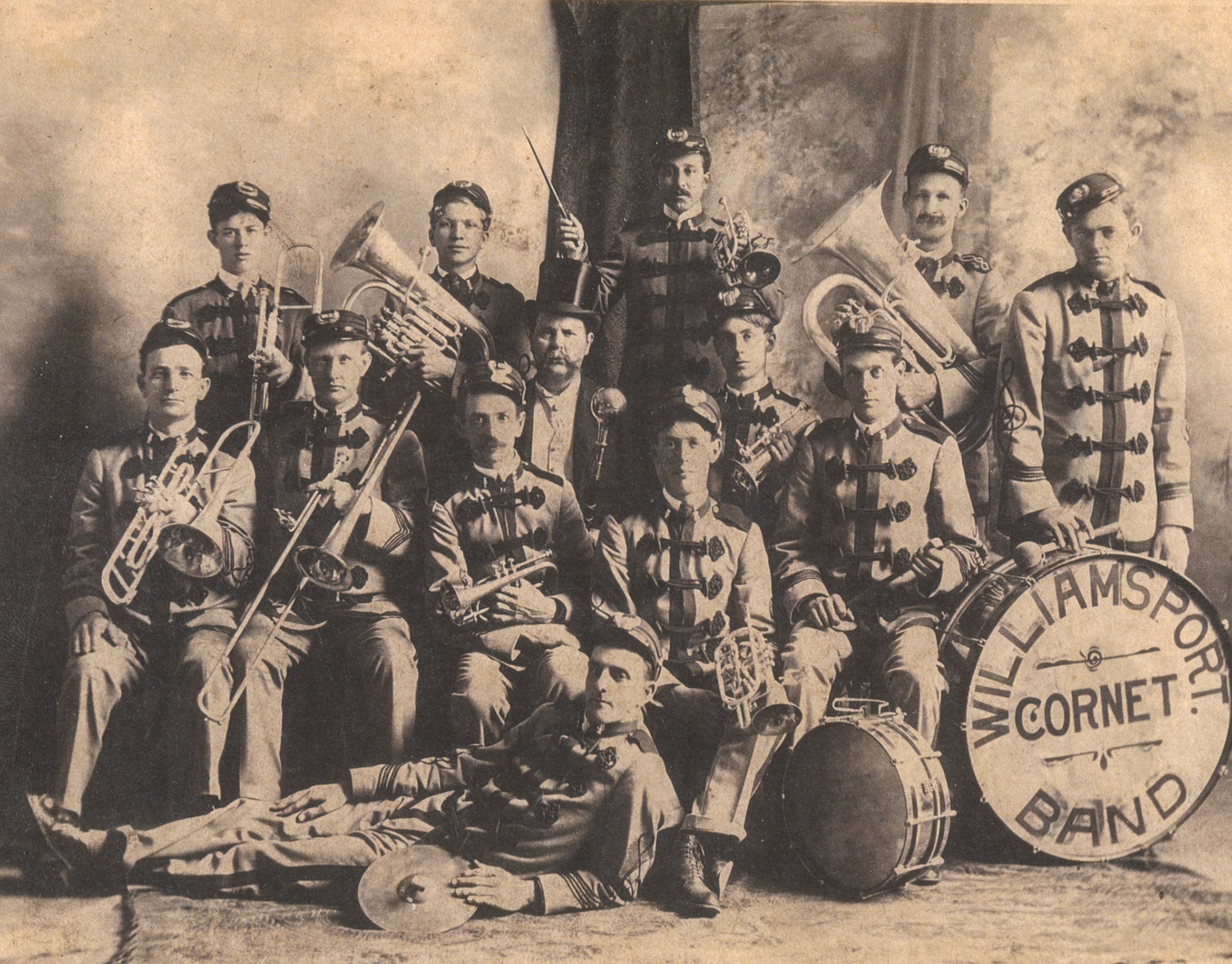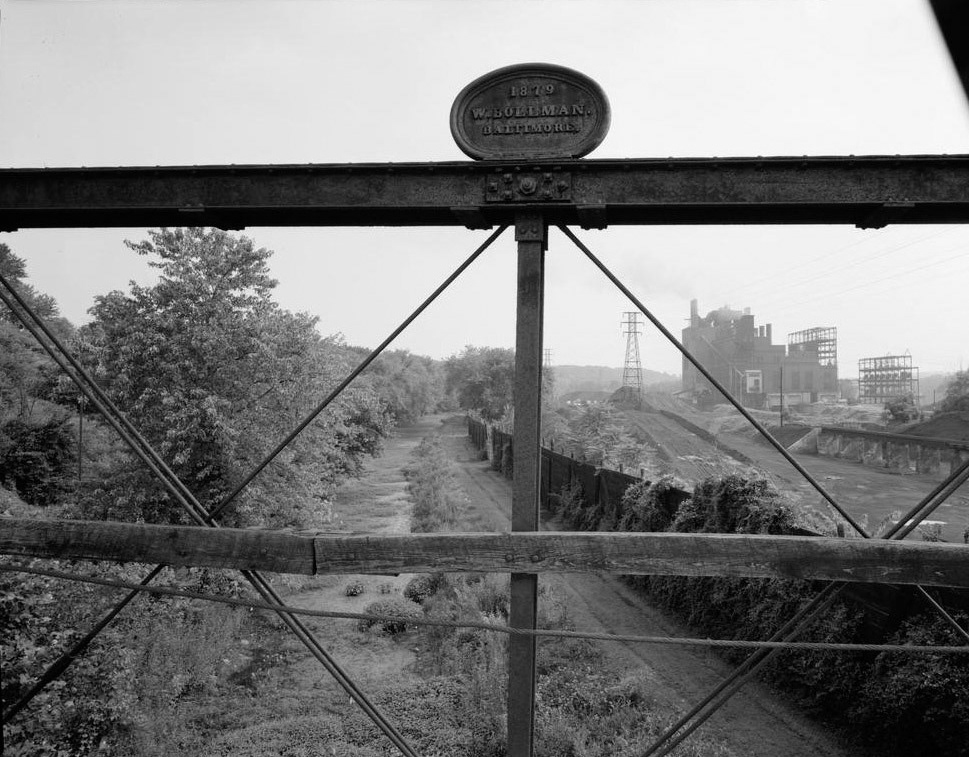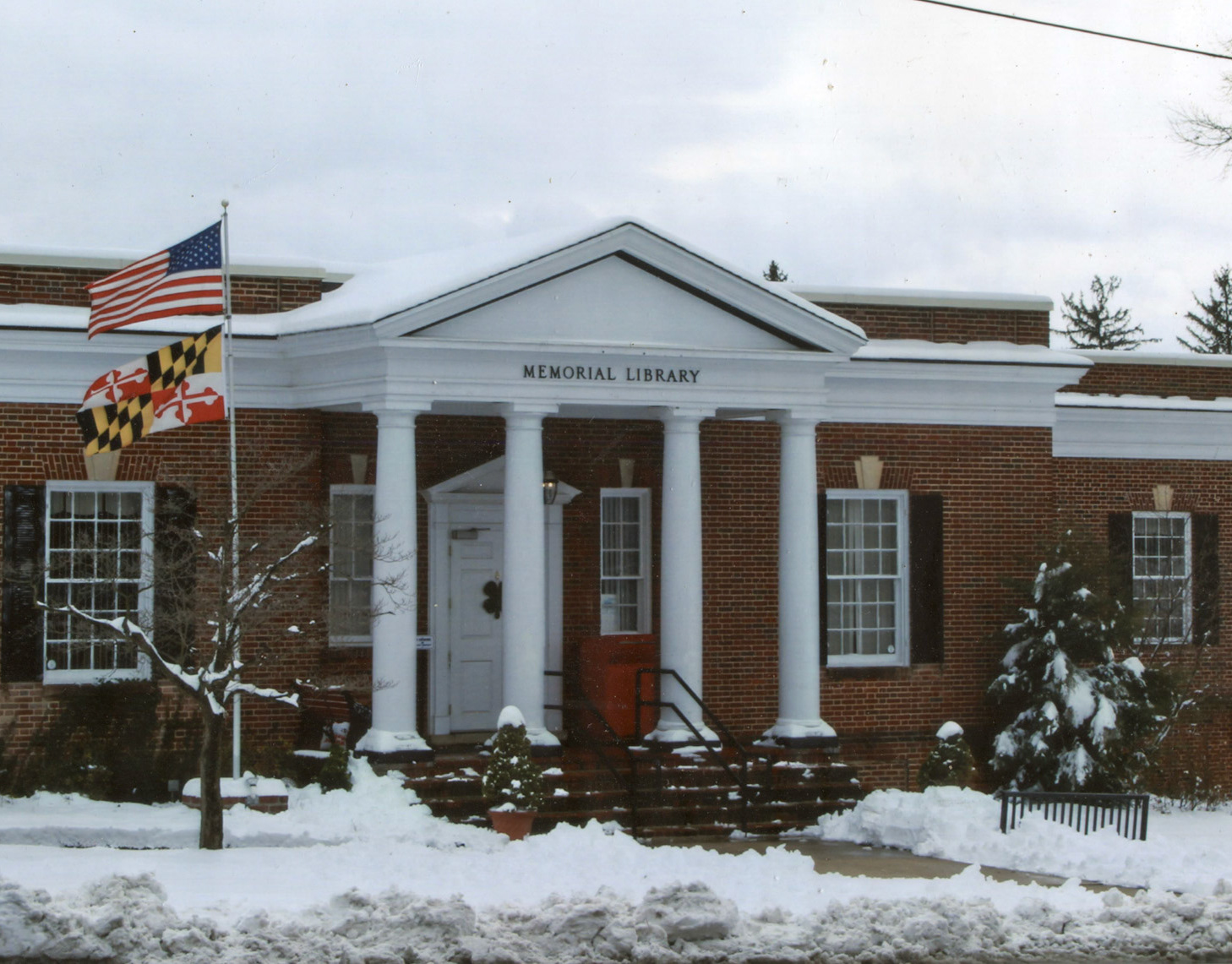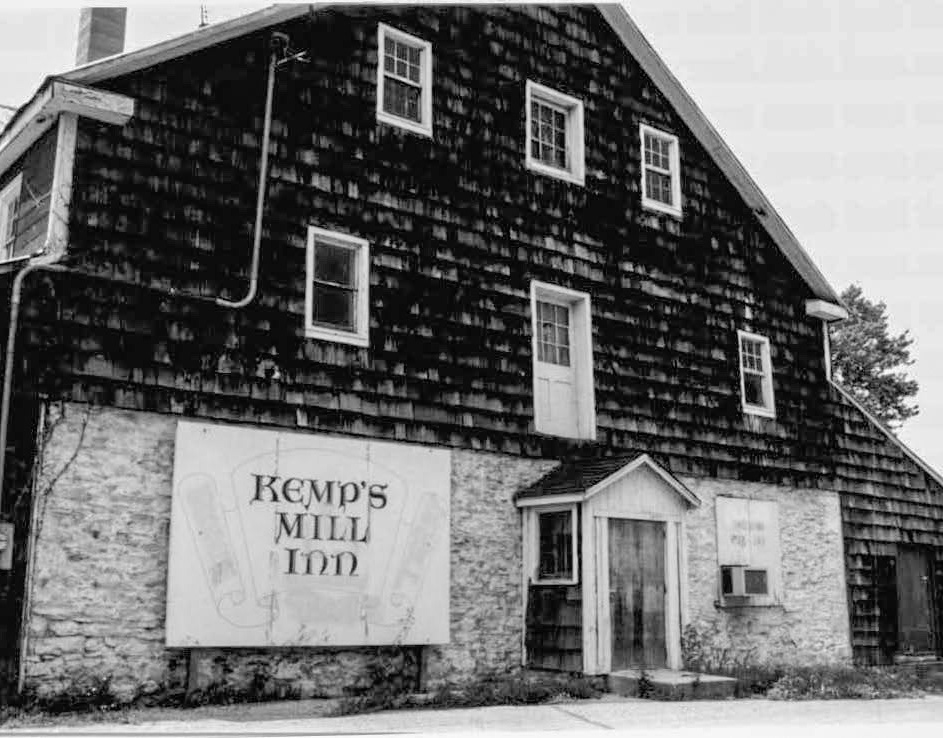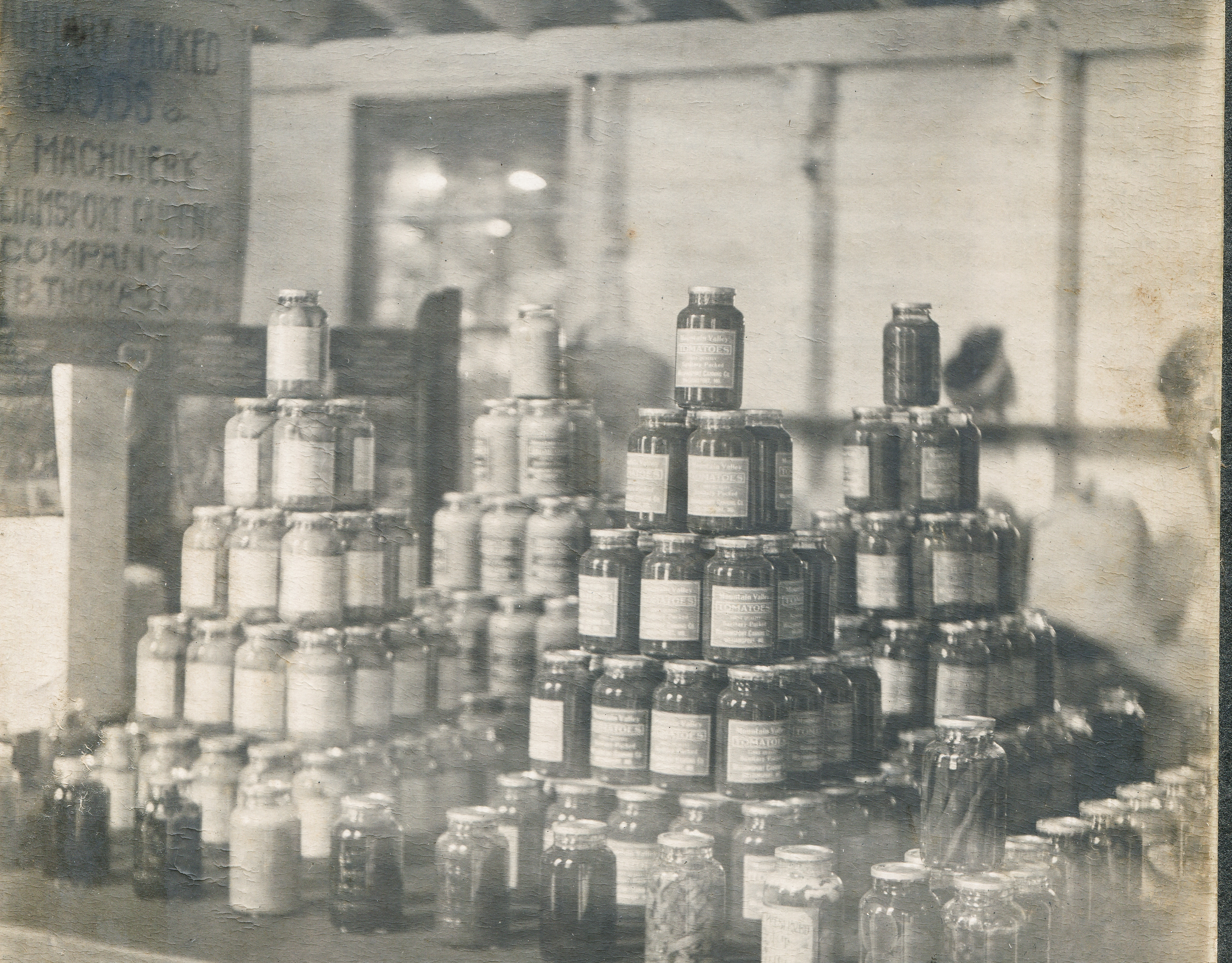Captain Abner Doubleday did order the first shots of the Civil War, but contrary to some news reports, it wasn't at Williamsport. Doubleday was second in command at Fort Sumter and ordered the first Union cannon shots in defense of the fort on April 12, 1861, when the fort came under Confederate attack and the beginning of the Civil War. Following the action at Fort Sumter, Harper's Weekly tabloid hosted a front page illustration of "The Hero's of Fort Sumter," making Doubleday and his fellow officers overnight national celebrities.
Under the command of Major General Robert Patterson, Doubleday was ordered to Hagerstown to await a battery of heavy guns and howitzers arriving by railroad from Governor's Island, New York. Doubleday then transported the guns to Williamsport to protect the Chesapeake & Ohio Canal with his two artillery companies.
Doubleday's camp at Hagerstown near the Franklin Rail Line was overrun with curious locals eager to glimpse the hero of Fort Sumter, the recently promoted Major Abner Doubleday. The siege guns arrived in Hagerstown on June 19, 1861, to huge crowds and fanfare. The next day the guns were transported to Williamsport and placed in the cemetery on a hill overlooking the Potomac River. Positioning the cannons on the high ridge overlooking the Potomac River was a more manageable task than it first appeared. At the time, a road ran the entire length of the cemetery along the upper ridge ending where the cannons stand today.
In early July 1861, Doubleday and his battery were assigned to guard the river crossing while the rest of Patterson's army marched toward Martinsburg, Virginia (now WV). Confederate forces soon barraged Patterson's troops under the command of General Thomas J. (Stonewall) Jackson and Lieutenant Colonel James Ewell Brown (J.E.B) Stuart. Doubleday provided cannon cover for Union soldiers as they retreated into Maryland. After the skirmish, Doubleday's battery was ordered away, and he took his cannons with him. As battles go, it was a minor conflict.
In the final decade of the 19th century, Congress passed some of the first historic preservation legislation designating four major battlefields as National Military Parks. Every town that saw action during the war sought to honor its veterans and memorialize sites. Under the direction of Civil War veteran Mayor George W. Thompson, Williamsport chose to celebrate "Battery Hill." The 1897 newspaper accounts of the action at Williamsport dramatically transform it from a minor skirmish to Doubleday's salvation of the Union from the lawless Confederates - "Gen. Doubleday planted a battery on the hill commanding the entire sweep of the river."
On July 4, 1897, an estimated seven to ten thousand people attended an Independence Day celebration, parade, and dedication of Doubleday's Battery Hill. A mock battle was fought in the river bottom meadow, complete with a twelve-pound cannon on loan from the G.A.R Post of Chambersburg, Pa. This reenactment may be one of the few times in history when reenactors fought in original Civil War uniforms. The hill was dedicated, and politicians glorified General Doubleday in lengthy speeches:
A few weeks after this [Fort Sumter], this same man was standing on this hill and pointing his guns at the Confederates assembled on the opposite heights, as the representative of his government, no longer on the defensive, no longer contending for the right to hold its own fort under the protection of its own flag, but asserting the right to suppress by force of arms all resistance to its sovereign authority. Herald and Torch Light, July 8, 1897
In the ceremony, Williamsport Commissioner M. Emmett Cullen presented the grounds to the Reno Post G.A.R. of Hagerstown for perpetual keeping. One newspaper reported the Town of Williamsport owned the land. In contrast, the Hagerstown Herald and Torch Light reported that the Williamsport Memorial and Cemetery Association had donated the land where the cannons had stood. Legally, that small parcel of land was owned by Victor Cushwa, not having been part of the annexation of the graveyard. Commissioner M. Emmett Cullen was Victor Cushwa's son-in-law, who Cushwa had taken into his firm shortly after Cullen's marriage to his daughter. Therefore, Cullen's "presentation" of the grounds to the G.A.R. would have been sanctioned by Victor Cushwa.
Now that Williamsport had an official Civil War site, they wanted cannons. In a special session of the Williamsport Council on August 16, 1899, the town formally accepted three cannons from Sharpsburg for display on Battery Hill. These three Antietam Battlefield cannons formerly stood in Sharpsburg town square and did not come with gun carriages.
One year later, the Mayor reported the cannons were still lying on the dirt, and the town needed to appropriate or raise funds for supports. A short while later, the guns were finally mounted on brick plinths, and a dedication ceremony was held on July 4th, 1901.
In early 1902, Charles W. Adams, superintendent of Antietam Battlefield, repeatedly petitioned the burgess and commissioners of Williamsport to have Battery Hill ceded to the government as part of Antietam Battlefield for the perpetual care of the site. No action was taken.
In the following years, the surviving veterans of the Reno Post G.A.R of Hagerstown maintained Battery Hill and part of the cemetery. In October of 1936, the last surviving member of the post, veteran Thomas C. Rowe, Company B, 115th Infantry Maryland Volunteers, died in Hagerstown. He is buried in River View Cemetery.
With no veterans to maintain the grounds, in April of 1939, Williamsport applied to the National Park Service to reconstruct the gun pits and remount the rusting cannons. The plan also called for constructing a log power magazine, grading the deteriorated earthworks, and a fence to restore the area to its 1861 appearance. The $13,000 project was to be funded by the Infrastructure Works Progress Administration (WPA) created by President Roosevelt. In September of 1939, the Park Service disapproved the Doubleday Hill restoration project, citing: "grading and sodding on an historical site not previously explored archaeologically under supervision of a trained archaeologist may destroy historical evidence which can never be replaced." They explained they could not supply the technicians or archaeologists at this time.
That same year Williamsport requested federal funding to erect a monument to honor General Abner Doubleday. Former Hagerstown resident and noted Civil War historian Reverend George Gelbach, a professor of history at Cambridge, MD. high school was very vocal in his opposition to the plan. He argued that while the action at Williamsport deserved to be remembered, to place a monument honoring Doubleday was "one of the most inane propositions of all time." He furthered that General Doubleday's services were insignificant, and the first shots of the war were not exchanged at Williamsport. He noted that Washington County had about 55 other equally important skirmishes and "monuments might be raised here, with equal claims, to at least 40 generals."
It was not a coincidence that Williamsport chose to honor Abner Doubleday in 1939. On June 12, 1939, Cooperstown, New York, was set to host the first induction ceremony of baseball greats Ty Cobb, Walter Johnson, Christy Mathewson, Babe Ruth, and Honus Wagner into the newly opened Baseball Hall of Fame. In 1907, the Spalding Commission erroneously concluded that on June 12, 1839, Abner Doubleday laid out the first baseball diamond at Cooperstown and, therefore, he should be known as the "father of baseball." That notion was still promoted thirty years later when a Cooperstown philanthropist financially supported the construction of the Baseball Hall of Fame completed in 1936. Newspapers across the country carried the story of Cooperstown's upcoming celebration, Doubleday's action at Williamsport, and the campaign to erect a monument in his honor on Battery Hill.
Later research proved that in 1839, Abner Doubleday was enrolled at West Point, not at Cooperstown. Additionally, Doubleday never claimed to have any influence over the sport, supported by the fact that many personal letters and documents were among his possessions at the time of his death, none of which mention the game. Fortunately for Williamsport, the monument was not built, and the notion that Doubleday invented baseball has been laid to rest.
1939 Dedication of the Baseball Hall of Fame in Cooperstown, NY
These original cannons sat on their brick plinths on Battery Hill for just about 100 years. Sometime around the year 2000, a cannon collector offered the town money for the tubes. At that point the town of Williamsport realized the value of the cannons and had them moved to the basement of town hall. Plastic cannon replicas were set on the brick plinths.
In July of 2012, the town was awarded a $23,000 grant to restore the cannons through the Maryland Heritage Areas Authority. In August of 2012, the tubes were loaded on a flatbed truck and sent to the Steen Cannon & Ordnance Works in Ashland, Ky., to be refurbished. There, the company smoothed out the rough finish on the tubes and made aluminum cannon carriages for them, he said. The insides of the tubes were coated with oil to preserve them and the ends were plugged.
Thanks to the effort of the Town of Williamsport, in May of 2013 the original, refurbished cannons were returned to Battery Hill, seated on historically accurate carriages. The plastic cannons now decorate the basement of town hall.

